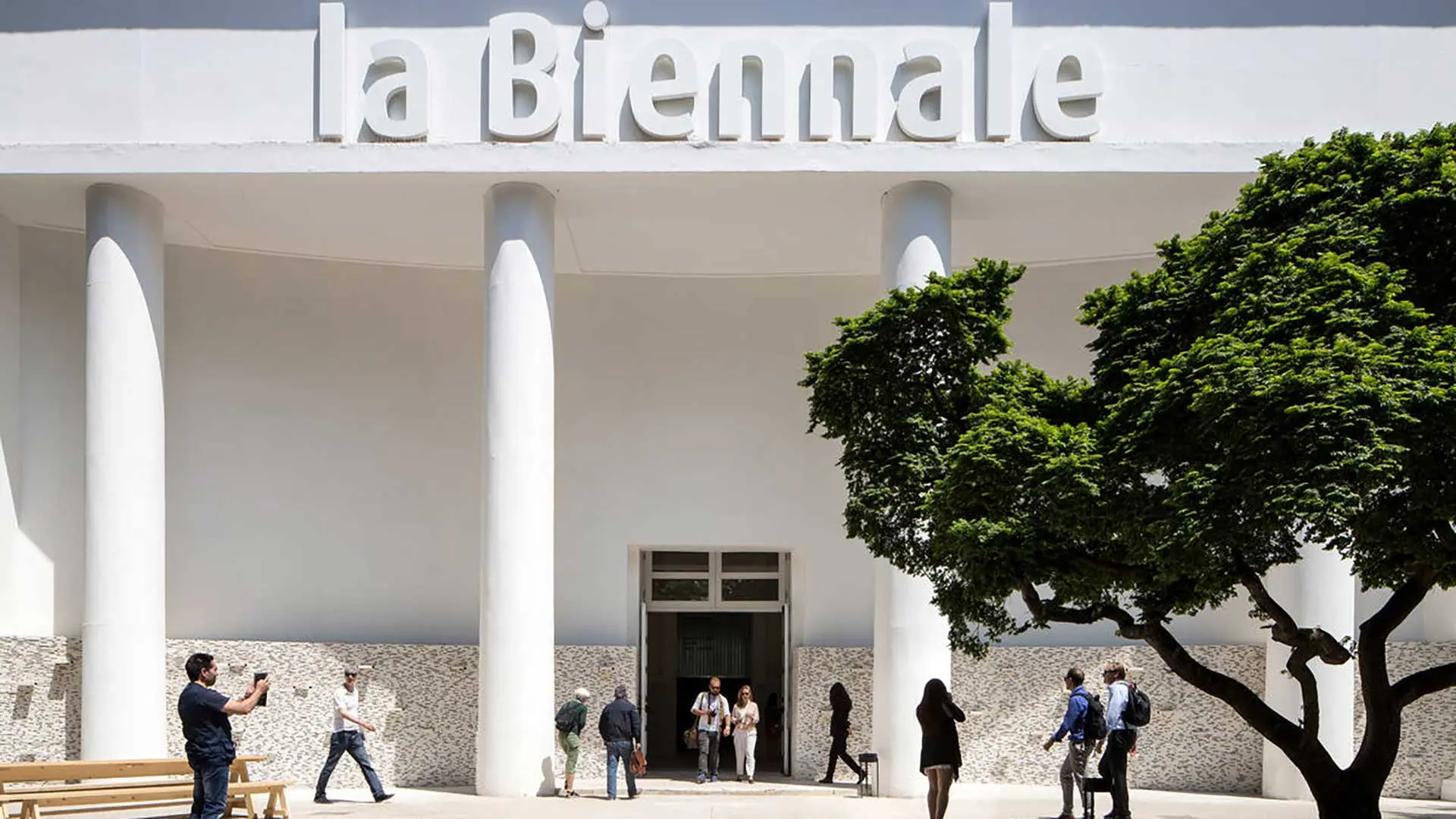Curved, enveloping lines, mute and earthen shades inspired by nature, geometries that never penalize comfort, even when they become more daring, imaginative variations on interlacing cords or fibers: these are the salient features of the outdoor offerings presented at the fair by companies in the sector. Here we tell you all about them
Through Villa Héritage, design becomes a sensory and human experience

Pierre-Yves Rochon, Villa Héritage, Salone del Mobile.Milano 2025 - Ph. Monica Spezia
A journey through the installation designed by Pierre-Yves Rochon for the Salone 2025, with precious materials and fabrics set in atmospheres suspended in time that create a vibrant and enveloping aesthetic
One of the wonders of this edition of the Salone del Mobile is the site-specific installation Villa Héritage, designed by the Pierre-Yves Rochon studio and located in Pavilions 13 and 15, introducing A Luxury Way, a revisiting of the concept of design understood in this case as a simultaneous sensory and human experience. A refuge in the heart of the Salone, a multi-sensory mise-en scène of light, colours, volumes and materials in which each room strikes up a dialogue between architecture, arts and materials.
The square plan leads through stunning spaces, each with its own soul. A contemporary female sculpture stands in the centre of the entrance to the Villa, emphasising the centrality of the human figure in the built spaces. An evocative narrative starts in the Red Drawing Room, characterised by contemporary furniture that dialogues with the museum pieces, recalling the dramatic intensity of opera houses. Solid wood armchairs from the Zanaboni Collection upholstered in damask fabrics with handmade trimmings enhance precious materials and craft techniques handed down over time, while the red armchair by Minotti embodies a different style. The sumptuous Napoleon Chandelier with 24-carat gold IDogi decoration embodies the concept of eternal beauty, filling the room. Two Franco Monzio Compagnoni neoclassical dressers feature refined inlays of rosewood, ash, maple and fruit woods. Further glamorising the room are pieces of silverware by Argenteria Schiavon and a dress from La Traviata, designed by Luchino Visconti and worn by Maria Callas, and 18th century fabrics by Luigi Bevilacqua enrich the Venetian savoir-faire.
From theatrical red we proceed into the plum-coloured Library where the focus is on the transmission of knowledge and actions. Two solid cherry wood modular bookcases by Annibale Colombo dominate the scene. The door and drawer panels are a combination of Macassar ebony and crocodile skin. There are also Ghidini1961 table lamps, transparent I Biagi vases, an iconic wooden statue of a greyhound by Roberto Giovannini, a wooden Cappelletti desk and a Pinetti backgammon set – an indispensable board game in Canaletto walnut. An Empire-style chandelier by Moscatelli with a 24-carat gold finish with antique patina and hand-painted bronze accents, an example of unique craftsmanship, illuminates and enriches the room, transforming it into a fascinating, unique space. The room also contains a dress, now reproduced by the students of the Accademia del Teatro alla Scala designed by Lila De Nobili and worn by Maria Callas in La Traviata directed by Luchino Visconti, which becomes a vehicle for memory as much as knowledge.
From the chamber of wisdom, the itinerary continues into a room in which green reigns supreme, inspired by the magnificent glasshouses of the 19th century and a homage to Italian landscapes. The Winter Garden transforms the space into a place of deep connection between architecture and nature. The classically designed carpets with elegant and traditional 20th century-inspired motifs are by Golran. Classic sofas upholstered in contemporary patterned fabrics represent the dialogue between tradition and modern creativity. There are glasses in pastel shades by Vetrerie di Empoli and cutlery by Ercuis & Raynaud. Centre stage, a Barovier&Toso Murano glass chandelier is redolent of plant worlds, majestic in its finery. Multicoloured pâte-de-verre flowers, a multitude of decorations and the purity of crystal make Model 4607 a chandelier destined for the grandest palaces on the Grand Canal.
The Bathroom is a play of reflections, matter and symbolism, with a wall of mirrors by Arte Veneziana fragmenting perception by modulating the light. A 1930s-inspired Devon&Devon bathtub achieves a balance of functionality and sculpture, flanked by two Saint-Louis Crystal glass lamps, towels by Lino Biancoperla and THG bath and washbasin taps, along with an armchair with a birch plywood and polyurethane foam structure by Oniro Group. The Barovier&Toso pendant lamp inspired by flowers and nature, characterised by a delicate corolla-shaped design, makes for a sophisticated embroidered effect. In the centre of the room is a transparent glass table by Gallotti&Radice.
White predominates in the Bedroom, becoming invisible architecture that shapes the space and the objects that inhabit it, turning into a celebratory element and dialoguing with pieces from different eras. A magnificent bed by Pozzoli with a Louis XVI-style canopy structure takes pride of place, with a bed linen collection by Beltrami. A Louis XIV Villari chandelier inspired by Baroque grandeur celebrates the art of porcelain. Made of Capodimonte porcelain, this extraordinary 36-light creation with hand-carved details is an embodiment of Italian sophistication and craftsmanship. A Casamilano sofa with a refined, enveloping silhouette made of solid pine offers exceptional comfort. In the windows, the Venice Lido comes alive through images from Luchino Visconti's Death in Venice, while Mahler's Adagio envelops the space.
The blue of the Dining Room channels an aesthetic that alters through dialogue between different worlds, reminiscent of the sea, of movement, carrying with it the influences of distant lands such as Asia and India, reinterpreted over the centuries in European furniture and decorative arts. A Salda lacquered sideboard with gold profiles dominates the scene, in a harmonious blend of aesthetics and functionality, where clean lines and a solid structure evoke a sense of elegance. Perfect for refined spaces, it combines the depth of the black lacquer with the brightness of the golden profiles, creating a contrast. The Delft porcelain is Vista Alegre, the Rivolta Carmignani pure linen napkins are notable for their fresh, sophisticated colour combinations, there are Venini blown glass vases and two large Jansen mahogany plant stands. A huge wooden Medea 1905 table stands in the centre of the room. On the wall, a late 17th century Flemish Illulian tapestry depicts a fox hunt amidst lush vegetation. The vivid colour palette amplifies the baroque sense of abundance. Loris Zanca, and L’Opificio are just some of the names that have contributed to the details of this marvellous sensory journey.
Making for a final intake of breath, Villa Heritage’s Music Room is a space in which architecture, sound and matter enter into dialogue. The brown shades of the room make for a muted atmosphere. The ceiling is dominated by the imposing dome of the Pantheon in Rome, immortalised by the lens of Massimo Listri. The Francesco Molon Dorico console is an expression of the perfect technical balance between substantial wooden thicknesses and bold geometric metallic inserts. Music is objectified through a Bellotti Ezio harp, representing tradition, and an Alpange piano that achieves the purity, balance and harmonic richness of a grand piano thanks to a state-of-the-art digital process. The resulting sound is immersive, profound and emotionally stirring, in line with the philosophy of Villa Héritage, where past and future meet in a continuous dialogue, becoming a symbol of an evolving art, in which music becomes not just listening, but vibration, a powerful experience that comes alive in its immediate environment.
Thanks are due to: Alpange, Bianco Bianchi, Ceramiche Ceccarelli, Dedar, Galleria Frilli, Tessitoria Luigi Bevilacqua, Mario Consolo Antiques, Massimo Listri Fotografo, Papier de Paris, Rubelli, Sahrai, Samuel& Sons, Tassinari & Chatel Lelievre, Accademia Teatro alla Scala and Teatro alla Scala.




























